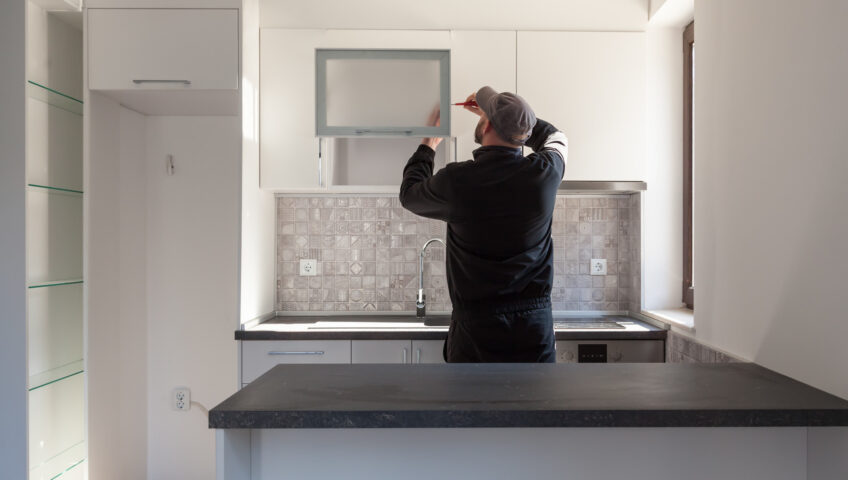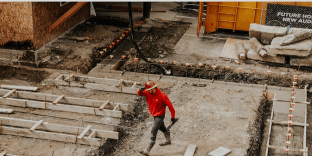
10 Mistakes Newbies Make When House Flipping
Investing in real estate has long been one of the most successful ways to build wealth and capital. For many, that looks like house flipping for a profit. This means you buy a home that needs work for a lower price point, make the needed repairs and then sell it again for a higher price.
It’s a simple concept that works for many, which is why it’s so popular. But a simple idea doesn’t mean it’s just as easy to pull off and get right. Revamping, renovating, and repairing a home can be a huge undertaking, especially if you’ve never done it before.
Luckily, a lot of people have figured out the best ways to be successful in house flipping and have shared their insights. Follow this house flipping guide for the top ten mistakes you should avoid to make the most you can!
1. Buying the Wrong House
Arguably, the most important aspect of flipping a house is starting with the right house, to begin with. The whole point of doing this type of project is to get a return when you sell the house after making the repairs. If you’re not careful about the house you buy, making a profit may become impossible.
It’s important to get a thorough inspection done so you know what kind of hidden structural repairs may be needed. These things can eat up a budget and make it so you pay too much to get anything back.
You’ll also want to look at the local market and the specific area the home is in. This will give you a good idea of what homes are selling for and the possibility for your margins.
2. Leaving Floor Plan As-Is
A huge aspect of an appealing home is how well it can function for a family. The finishings are nice but the right layout is crucial.
For many flipping projects, this means the floor plan may need to change to make the most of the available space.
Changing the layout isn’t a simple fix and the decision shouldn’t be made lightly. It’s a good idea to bring in a professional demo team to determine what’s possible and how to best execute the plan. Their expertise in these areas will be invaluable as you balance all the factors to come to a final decision.
3. Failing to Secure a Team
Bringing down a wall, especially a load-bearing one, is an obvious time that you need professional help. Failing to secure a team of experts for major projects can leave you with huge problems and even more expensive repairs.
As you make your renovation plan, take a critical look at the steps you’ll need to take for each item. It’s a good idea to automatically outsource the items that could be potentially dangerous or are high-ticket items. These would include any electrical work, plumbing changes, and roofing jobs.
It should go without saying that you don’t want to hire just anyone for your project. Make sure you screen each company and get solid confirmation that they are available and can help before starting your project.
4. Focusing on Your Specific Style
While it’s fun to transform your home to represent your personality and personal style preferences, a house flip isn’t the place for those kinds of choices. In order to be able to sell the home quickly and for the most, it needs to appeal to the widest audience possible.
This doesn’t mean you can’t add in any trendy elements or make the home feel more modern. It just means you have to find the balance and not go too overboard with specific style finishes.
The best thing you can do is focus on the house’s style itself and try to bring out the beauty that’s already there. Don’t worry about making everything look like every other house on the market. Just keep things simple, neutral, and ready for someone else to add their special touches!
5. Taking Shortcuts
Flipping a house normally requires a lot of separate projects going on at the same time to get the project done. Sometimes it can be tempting to start taking shortcuts on some of the projects to limit the timeline as much as possible.
The quicker the turnaround on the home, the more profit you can make in the end, so it makes sense.
But taking shortcuts and not doing things properly will always give you poor results and is never worth the risk. You don’t want to have something become dangerous, fall apart in a short time, or give the potential buyer a reason to back out. It’s better to get the job done right the first time and avoid these issues altogether.
6. Waiting to Order Materials
Doing any kind of renovation project means you’re going to run into delays here and there. That’s just inevitable for most construction-type projects.
While you want to be flexible when those things happen, you also want to do all you can to avoid them in the first place. The biggest thing you can do is order all of your materials well in advance of when you need them. Availability and shipping can turn into nightmares if you try to find something last minute.
As soon as you know what your main projects are going to be, start looking into materials and making those orders as quickly as possible.
7. Making Unsafe Decisions
Every guide to house flipping should have a section on keeping safety as the top priority. So many construction projects have the potential to be dangerous if you’re not careful. The same is true for the final projects as well. Something you think is no big deal can end up being a hazard for the next family to live there.
This is especially true when you decide to remove walls or change structural elements. It’s crucial that you work with the right experts to make sure everything is to code both during the project and in the final results.
The last thing you want is to have an accident and someone gets hurt because safety measures weren’t followed.
8. Attempting Projects Out of Your Skill Level
For most house flippers, the only way to make this type of undertaking successfully is to take on some of the work themselves.
This is the best way to save money on your renovation budget and give you more of a cushion in the profit. But if you’re not careful it can end up having the opposite effect and make the project much more difficult. It’s important to be realistic about what you can and can’t handle with your skillset.
Before jumping into a project, research the proper way to complete it. Then take a good look at if you’ll be capable of handling it or not. It’s good to try new things and gain more skill as you go but always with that side of caution.
9. Going Way Over Budget
The easiest way to mess up a house flip is to have no budget or to blow the one you’ve set up for the renovation. When you don’t stay within your limits, you’ll end up spending any profit you could have made in the sale.
A great way to set up a house flip budget is to go through each element and price out every detail from the labor to materials to permits that may be necessary. The more in-depth you can go, the better as it will help you know exactly what to expect and what you can afford.
It’s not enough to make a great budget though, then you have to be disciplined in sticking to the plan!
10. Having Unrealistic Expectations
There’s really nothing like the creativity that can come when walking through a potential flip house for the first time. It’s the best thing to dream and scheme what to do with all that potential.
Those ideas are important to have so you can solve the problems of the home and make it as great as it can be. But it’s also important to keep them in check and temper expectations. The last thing you want is to give yourself false hope for something that simply won’t work out in the end. Check-in with yourself every once in a while to keep this from happening.
House Flipping Mistakes to Avoid
It’s so discouraging to take on a project you think is going to be a huge win only to realize you’re in over your head and it’s not going to turn out well. That pendulum swing can really take any motivation away.
The best thing you can do for any house flipping project is to create an overall plan to start with and then take things one step at a time. Utilizing professional advice is a great way to make sure everything stays on track and you avoid issues and unnecessary delays. This is especially true when you’re working on changing the current structure of the home.
If you’re looking into a home flip or working on a current project where you need to remove a wall, contact us today!


